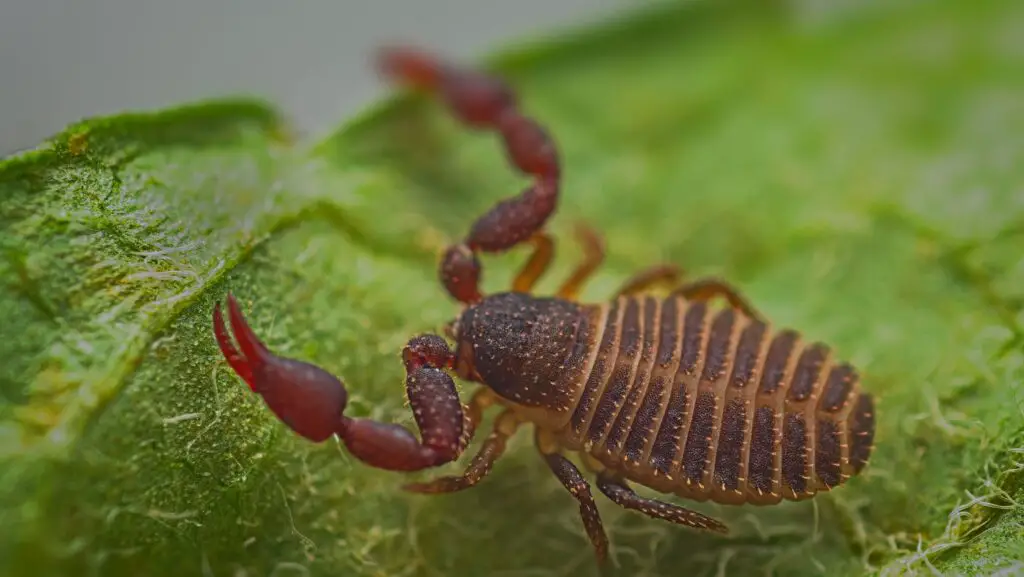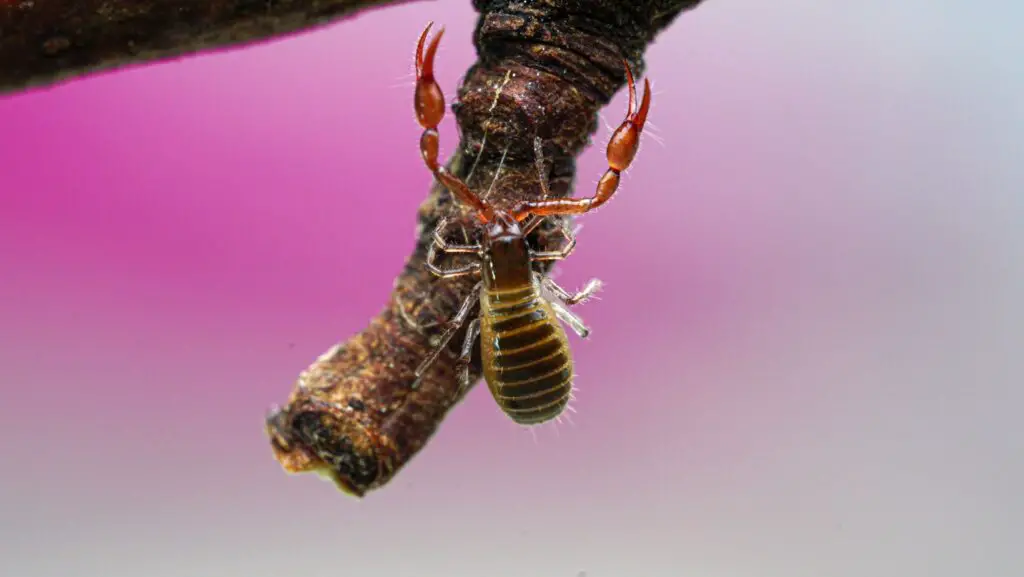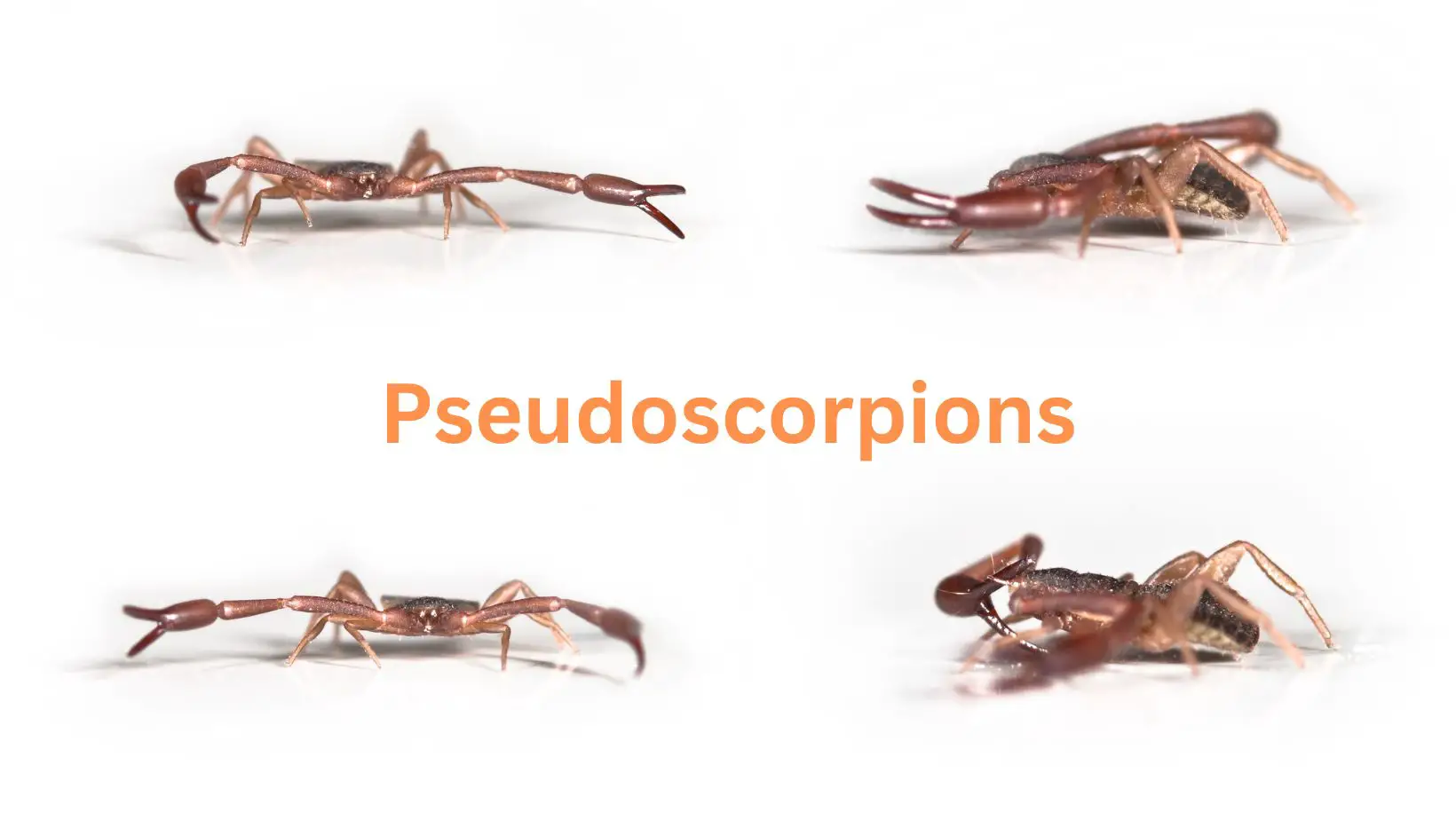Pseudoscorpions are intriguing arachnids that belong to the order Pseudoscorpiones. Despite their name, they are not true scorpions but share certain characteristics with their arachnid relatives. These small creatures are found in a variety of habitats worldwide, including forests, caves, leaf litter, and soil environments.
Pseudoscorpions have a unique appearance, resembling miniature scorpions without a stinger. They typically measure just a few millimeters in length, although some species can reach up to a centimeter or slightly more. Their bodies are compact and divided into two sections: the cephalothorax, which contains the head and fused thorax, and the abdomen.
One of the distinguishing features of pseudoscorpions is the presence of pedipalps, which are specialized appendages resembling pincers. These pedipalps are used for capturing prey, defense, and sensory functions. Pseudoscorpions have eight legs, with each leg ending in a claw-like structure.
These arachnids are known for their unique reproductive behavior. Male pseudoscorpions often transfer sperm packets to the female using specialized structures called spermatophores. The female carries the fertilized eggs in a brood sac, where they develop until they hatch as nymphs.
Pseudoscorpions are beneficial in various ecosystems as they feed on small arthropods, such as mites, springtails, and booklice. They are considered to be natural predators, helping to regulate populations of potential pests.
Despite their small size, pseudoscorpions exhibit fascinating adaptations and behaviors. They have evolved to thrive in diverse habitats, displaying remarkable resilience and survival strategies. While they may be inconspicuous to many, these tiny arachnids contribute to the intricate web of life and play an important role in their respective ecosystems.

24 Amazing Types of Pseudoscorpions
- Cheliferidae: Pseudoscorpions belonging to the family Cheliferidae are typically small and have a rounded body shape. They are known for their claw-like pedipalps that resemble scorpions. They can be found in various habitats, including leaf litter and soil.
- Chernetidae: Pseudoscorpions of the family Chernetidae are diverse and widespread. They have elongated bodies and long pedipalps. Chernetidae species can be found in diverse environments, ranging from forests to caves.
- Chthoniidae: Pseudoscorpions in the family Chthoniidae are commonly referred to as “book scorpions” due to their association with books and other stored materials. They are small, pale-colored, and have elongated bodies with long legs and pedipalps. Chthoniidae species are commonly found in dark and humid environments.
- Cheiridiidae: Pseudoscorpions in the family Cheiridiidae are small and have a distinctive flattened appearance. They often have bright colors and prominent pincers. Cheiridiidae species can be found in various habitats, including leaf litter and under rocks.
- Dendrochernes cyrneus: Dendrochernes cyrneus is a species of pseudoscorpion known for its elongated body and pale coloration. It is commonly found in forests and is associated with decaying wood.
- Harvestmen: Harvestmen, also known as daddy longlegs, are not true pseudoscorpions but belong to the order Opiliones. They have long, thin legs and a distinct body shape. Harvestmen are typically found in various terrestrial habitats worldwide.
- Lamprochernes nodosus: Lamprochernes nodosus is a species of pseudoscorpion with a robust body and distinct nodules on its exoskeleton. It is commonly found in leaf litter and soil habitats.
- Chernes cimicoides: Chernes cimicoides is a species of pseudoscorpion known for its flattened body and reddish-brown coloration. It is found in various habitats, including forests and caves.
- Neobisiidae: Pseudoscorpions of the family Neobisiidae are small to medium-sized with a diverse range of body shapes. They can be found in various environments, including soil, caves, and leaf litter.
- Lamprochernes chyzeri: Lamprochernes chyzeri is a species of pseudoscorpion known for its elongated body and dark coloration. It is often found in leaf litter and soil habitats.
- Garypinidae: Pseudoscorpions in the family Garypinidae are small to medium-sized with a diverse range of body shapes. They can be found in various habitats, including soil, leaf litter, and caves.
- Cheiridium museorum: Cheiridium museorum is a species of pseudoscorpion known for its small size and elongated body. It is commonly found in human-made environments such as buildings and museums, hence the species name “museorum.”
- Chelifer cancroides: Chelifer cancroides, also known as the house pseudoscorpion, is a common species found in various habitats, including houses, gardens, and leaf litter. They have a flattened body and are often associated with human dwellings.
- Microscorpions: Microscorpions are a group of small-sized pseudoscorpions characterized by their miniature size. They are typically less than a few millimeters in length and can be found in various habitats worldwide.
- Syarinidae: Pseudoscorpions belonging to the family Syarinidae are small to medium-sized with a range of body shapes. They are often found in leaf litter, soil, and other terrestrial environments.
- Atemnidae: Atemnidae is a family of pseudoscorpions known for their elongated bodies and long pedipalps. They are commonly found in leaf litter, soil, and other terrestrial habitats.
- Anthrenochernes stellae: Anthrenochernes stellae is a species of pseudoscorpion known for its flattened body and distinctive star-like pattern on its exoskeleton. It is typically found in leaf litter and soil.
- Lamprochernes savignyi: Lamprochernes savignyi is a species of pseudoscorpion characterized by its elongated body and dark coloration. It is commonly found in various terrestrial habitats, including leaf litter and soil.
- Roncus lubricus: Roncus lubricus is a species of pseudoscorpion known for its elongated body and pale coloration. It is commonly found in leaf litter and soil environments.
- Neobisium carcinoides: Neobisium carcinoides is a species of pseudoscorpion with a compact body and distinct coloration. It is often found in leaf litter, soil, and other terrestrial habitats.
- Apocheiridium ferum: Apocheiridium ferum is a species of pseudoscorpion characterized by its small size and elongated body. It is commonly found in leaf litter and soil habitats.
- Astigmatina: Astigmatina refers to a group of mites rather than pseudoscorpions. They are a diverse group of small arachnids with oval-shaped bodies and can be found in various habitats worldwide.
- Pseudochiridiidae: Pseudochiridiidae is a family of pseudoscorpions known for their elongated bodies and distinct body shape. They are commonly found in leaf litter, soil, and other terrestrial environments.
- Chthonioidea: Chthonioidea is a superfamily of pseudoscorpions that encompasses various species with diverse body shapes and adaptations. They are commonly found in leaf litter, soil, and other terrestrial habitats.
Please note that the descriptions provided are general and may not encompass all the characteristics or variations within each species or family.

Family of Pseudoscorpions: Pseudoscorpions belong to the order Pseudoscorpiones. Within this order, there are multiple families, such as Chthoniidae, Chernetidae, Neobisiidae, and many others.
Number of Legs: Pseudoscorpions have eight legs, just like true scorpions. They possess four pairs of legs, which they use for walking and capturing prey.
Difference from True Scorpions: Pseudoscorpions differ from true scorpions in several ways. While both belong to the class Arachnida, pseudoscorpions lack a stinger at the end of their abdomen, which is characteristic of true scorpions. Pseudoscorpions also have a more compact body form, lacking the elongated tail and metasoma that true scorpions possess. Additionally, pseudoscorpions are generally smaller in size compared to most true scorpion species.
Discovery of Pseudoscorpions: The exact discovery of pseudoscorpions as a distinct group is difficult to pinpoint since they have been observed and documented by various naturalists and researchers over time. However, Carl Linnaeus, a Swedish biologist, classified them as a separate order called Pseudoscorpiones in the 18th century.
Largest Pseudoscorpion: The largest pseudoscorpion species is often considered to be Garypus titanius. It is found in caves and rocky habitats in California, USA. While exact measurements may vary, specimens of Garypus titanius can reach sizes of around 12-14 millimeters (0.47-0.55 inches) in length.
